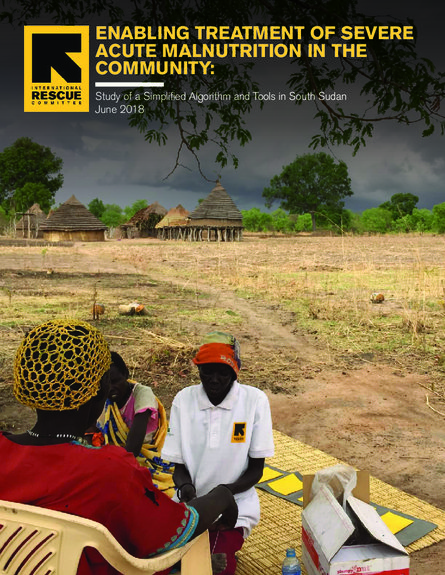
Malnutrition in South Sudan is omnipresent due to factors such as widespread disease (particularly malaria, diarrhea and pneumonia), poor health infrastructure and access to timely and effective treatment, prevalent non-recommended infant and young child feeding practices and inconsistent availability and accessibility to a diverse diet. In Aweil South County, the global acute malnutrition (GAM) prevalence remains above the national average and above the emergency threshold of 15% at 17.7%. A survey conducted by the International Rescue Committee (IRC) in Aweil South County showed that nearly 60% of severely malnourished children were not receiving treatment for severe acute malnutrition (SAM) through static facilities, with caregivers identifying the main barriers to accessing care as distance to facilities, inaccessibility due to the rainy season and high opportunity costs.
The IRC has been developing innovative approaches to increase access to treatment for acute malnutrition. Recognizing that long travel distance to facilities leads to high opportunity costs for caregivers, the IRC developed simplified tools and a simplified SAM treatment protocol to enable low-literate community-based distributors (CBDs) to treat children for malnutrition closer to the home. This included developing a modified mid-upper arm circumference (MUAC) tape with smaller color zones for monitoring progression, regression and stationary cases and a visual decal on the balance when weighing children to count out the number of sachets of ready-to-use therapeutic food (RUTF). Previous studies from Bangladesh have shown promising results with regard to how community-based models to treat SAM can be. However, models for low-literacy, crisis-affected settings have not yet been studied.
